Objectives:
Deploy an application with a custom environment to Google Cloud
Prerequisites:
Folk and clone this repo: https://github.com/hangnhat57/compute-engine-101/
Open Terminal and cd to the folder you’ve just cloned
First, let’s try to run the app on a local machine to verify it has worked:
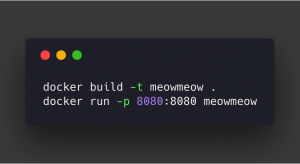
Open your browser and navigate to http://localhost:8080, you’ll see something like this:
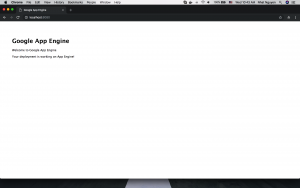
This application is serving inside a container which was customized from scratch:
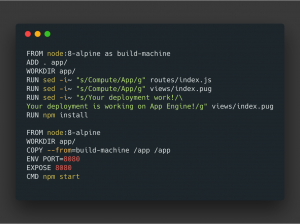
To deploy a custom container to App Engine, we have to use Google App Engine Flex – Custom Environment. By default, App Engine will serve container application in port 8080, so remember when you create an image.
App.yaml file will look like this :
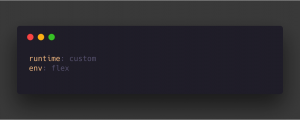
Now, on the terminal, start a command:
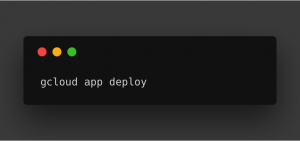
If this is the first time you using App Engine for the current project, Google will ask you for the region of App Engine service:
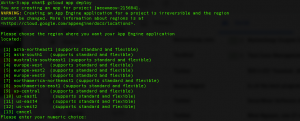
Select the region you want and wait until it finishes. Then use this command to view your app on the public:
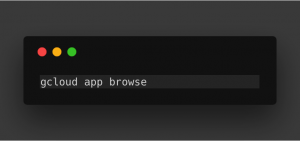
A browser would automatically open and navigate to your app:
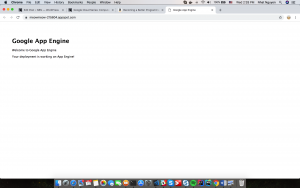
Have you read the previous post of the Google Cloud Series? Make sure you check it right now
Comment below or email us via contact@twentyci.asia if you have any question or want to have free consultation!
Nhat Nguyen
Nowadays, Cloud Computing is an important part of the Internet world. I remember when Apple introduced their iCloud, I thought it was funny, there would be no one want their data, especially sensitive personal data on the internet. Ironically, now most of my important files are on iCloud 😀
So Cloud Computing’s simply known as “the delivery of computing services—servers, storage, databases, networking, software, analytics and more—over the Internet” – regarding its definition. Companies offering these computing services are called cloud providers. You may know Amazon Web Service – the big guy, huh? Microsoft Azure and Google Cloud too, of course. In this series, I will give you some practices with Google Cloud Platform (GCP). Hope it will be helpful to you all, even just a little bit.
Google is a newbie in the Cloud provider market, but they are growing dramatically fast. On December 20th, 2017 Jefferies analyst John DiFucci introduced quarterly snapshots of public cloud services. Even though Amazon rules the public cloud, the year-over-year growth of 125% by Google Cloud Platform in 2017 is pretty incredible!
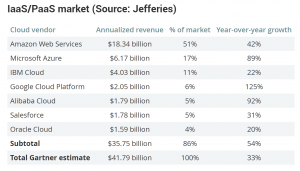
In this series, I will walk you through some popular resources of GCP that could help you understand more about them.
There will be 2 posts of the series
1.Introduction
2.In Action
But first, to follow this, you need to create a free trial account on GCP and install Google Cloud SDK on your device.
https://cloud.google.com/sdk/install
https://cloud.google.com/
After signing up for a new account and installing Google Cloud SDK, you should init your credential then create a separate project for practicing. So, let’s open your terminal and create it.
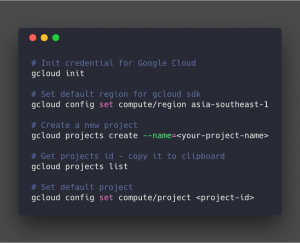
I will explain what the project is and how it benefits in another post. We have started with GCP by a few basic commands using the Google Cloud SDK command-line util.
Stay tuned for the next post! Leave a comment below or email us via contact@twentyci.asia if you have any question or want to have free consultation and please share & subscribe to our blog for more interesting posts.
Nhat Nguyen
The definition of Internet of Things (IoT) was first introduced for supply chain management (Ashton, 2009). However, in recent years, it has been more inclusive covering other sectors like healthcare, utilities, transport, real estate as well (Gubbi et al., 2013). It became a “buzz” word and most people might have heard about the term by now. But what do people know about it? In fact, the Internet of Things is all about connection. It is the interconnection of sensing device objects to share information across platforms.
Impacts of the Internet of Things in near future
According to a report from International Data Corporation (2017), global spending for the IoT will experience a growth rate of 15.6% annually, and by 2020 it will reach $1.29 trillion. The forecast for the most valuable IoT investments in 2016 is $178 billion in manufacturing, $78 billion in transportation, and $69 billion utilities. And real estate sector is not excluded from the trend. The IoT will change the real estate industry drastically in a way we never imagine before. In the innovation age, outdated ways of real estate management are costing business owners and consumers a massive amount of money and hindering business growth. The IoT has made a significant impact on both sides.
The IoT’s smart sensors help to analyze, monitor and control such as home devices, security, elevators, parking garage, … in the property (Ibarra-Esquer et al., 2017; White, 2018). With the IoT, data is gathered and generated from every single activity. It provides the managers with data-driven insights and improves the performance. As a result, the IoT will change how buildings and cites will be managed in the near future (Rathore et al., 2016).
How does the IoT specifically affect Real Estate?

For the commercial real estate industry, the IoT aid in gathering data to optimize sale and processes. The connections from IoT with big data processing allows business owners to keep track of consumers routines and information. From there, they can offer secondary services such as home-moving, house maintenance at the point of property purchases. In another view, the IoT can offer data to help managers and owners create differentiation immediately from the development stage. Behavior data from tenants can make it easier for developers to change and adopt new construction design. Population habits can also be collected to help management companies improve living space for their residences.
In other words, the IoT has slowly become an essential part of our life, and it will change the real estate sector for the better. If business owners want to remain competitive in the industry in this innovation age, they will have to modify and adapt to the new standard.

What is your opinion of the impact of the IoT on Real Estate? Or the impact of IoT in general? Please share with us in the comment below or contact us via email contact@twentyci.asia for free consultation.
Mia Tran
Reference
Ashton, K. (2009). That ‘internet of things’ thing. RFID journal, 22(7), 97-114
Gubbi, J., Buyya, R., Marusic, S. and Palaniswami, M. (2013). Internet of Things (IoT): A vision, architectural elements, and future directions. Future Generation Computer Systems, 29(7), pp.1645-1660.
Ibarra-Esquer, J. E., González-Navarro, F. F., Flores-Rios, B. L., Burtseva, L., & 1, M. A.-V. (2017). Tracking the Evolution of the Internet of Things Concept Across Different Application Domains. Sensors, 17.
International Data Corporation. (2017). Worldwide Semiannual Internet of Things Spending Guide.
Rathore, M., Ahmad, A., Paul, A. and Rho, S. (2016). Urban planning and building smart cities based on the Internet of Things using Big Data analytics. Computer Networks, 101, pp.63-80.
White, M. (2018). Real Estate and the Internet of Things. [online] Realtor Magazine. Available at: http://realtormag.realtor.org/technology/feature/article/2015/03/real-estate-and-internet-things [Accessed 6 Jun. 2018].